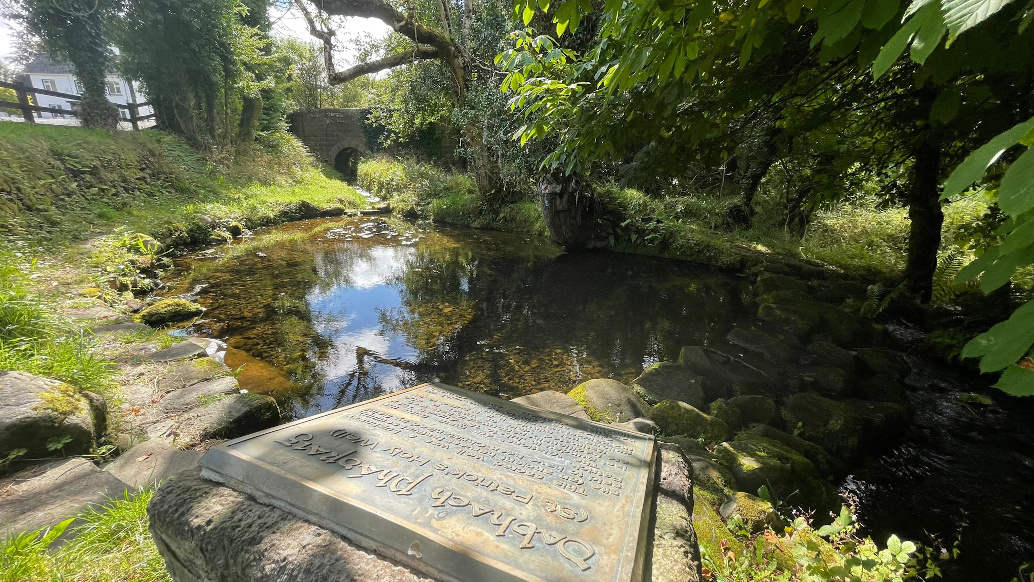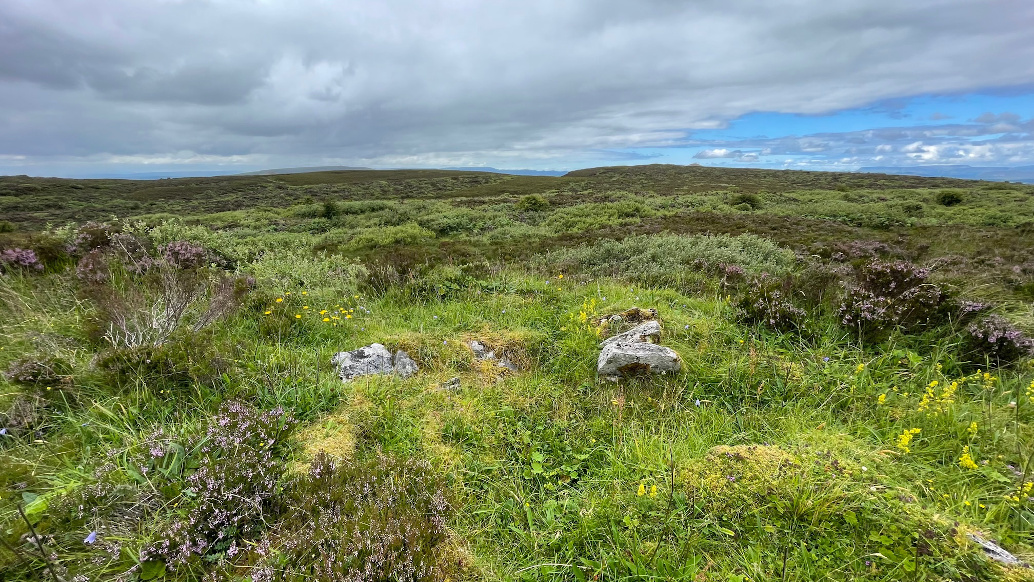







The stone in the foreground seems to be the only one still embedded in the ground.




A stream flows at the back of the rag trees on the opposite side of the well – the spring flows out into the stream to the left and the right.

The spring rises among the swirls at the bottom of the shot and flows out to the right and the left.



Court-stone offering, early autumn at Carrickmacsparrow.

Looking east from the back of the north-east facing gallery.


Entrance jambs into what was probably a three-chambered gallery.

North-west over the tomb. The stone nearest is one of two remaining from the southern arm of the shallow court.

South-west over the remains to Lough McNean lower with Cuilcagh in the distance.
A Google docs page with photos and various links about the campaign to preserve the Konckiveagh landscape:
docs.google.com/document/d/124XnYyWdP9JpmO0qur9bbDrhPWb2g0PrncdLggkamGk/edit
Finn and the Cailleach: Slieve Gullion & Knock Iveagh – a Winter Solstice Alignment
From the NISMR:
On Knockiveagh hill with panoramic views all round. The cairn is composed of stones with a covering layer of turf. The perimeter is demarcated by a kerb of stones. It is quite a substantial ciarn, 31.5m x 32m in diam., standing 2.2m high at S. In the centre of the cairn is a large hollow made by treasure seekers in the C19th, 4.8m across & 1.8m deep. At the bottom a large slab, part of the cist, was exposed. Excavation of the site in 1954 showed that this cist had been displaced. Secondary burials of an adult & child were found & the cairn was found to rest on an early Neolithic occupation layer.
3D Model of Cairn T


Portable bullaun, dumped in under a hedge beside a shed just north of the main monastic site.

Two large-basined bullauns south of the main monastic site.

The two side-by-side bullauns south of the main monastic site.

Interpretation of the Lustymore man in Aistear Labyrinth, Mountshannon, Co. Clare.

The photo from the 1961 published Survey shows an exposed chamber – 60 or so years later and it’s pretty inundated.

The inner face of the single northern sidestone of the chamber.

The prostrate facade stone is in the foreground-right.

Looking down onto the small 2 metre long chamber. It’s overgrown now but is in relatively good condition.

1.4 metre tall outer wall stone in the foreground – its southern match lies prostrate at the centre of the shot.

Looking front on at the entrance to this south-west facing wedge tomb.
Archaeologists says prehistoric site in Huelva province could be one of largest of its kind in Europe
A huge megalithic complex of more than 500 standing stones has been discovered in southern Spain that could be one of the largest in Europe, archaeologists have said.
The stones were discovered on a plot of land in Huelva, a province flanking the southernmost part of Spain’s border with Portugal, near the Guadiana River.
Spanning about 600 hectares (1,500 acres), the land had been earmarked for an avocado plantation. Before granting the permit the regional authorities requested a survey in light of the site’s possible archaeological significance. The survey revealed the presence of the stones.
The Sligo Neolithic Landscapes group was formed in 2015 in recognition of the threats to the unique Neolithic monuments and landscapes of county Sligo. SNL are a PPN group, part of a network of over 400 community and voluntary organisations aiming to effect positive change in Sligo.

Possible chamber stones in the foreground, looking north to Knocknarea.

Ruined cairn, below G and the main Carrowkeel concentration on Barnabinnia, now named Cairn X, continuing the convention started by McAlister, Praeger et al.



Looking south-east – very much like neighbouring Carin M, not much to look at but still retaining some dignity.



The landscape seems to go on forever up here – Cairn K is visible north, mid-right on the horizon.

Moody sky over the achingly sad remains of Cairn M – you could lay down here and stay forever... almost.

The top of Cairn K can be seen on the mid-left horizon.

Not easily accessible now, hazel scrub beginning to encroach.


The claustrophobia inducing low passage of Cairn H.

Denuded Cairn L – Lough Arrow is in the distance to the left of Cairn K.